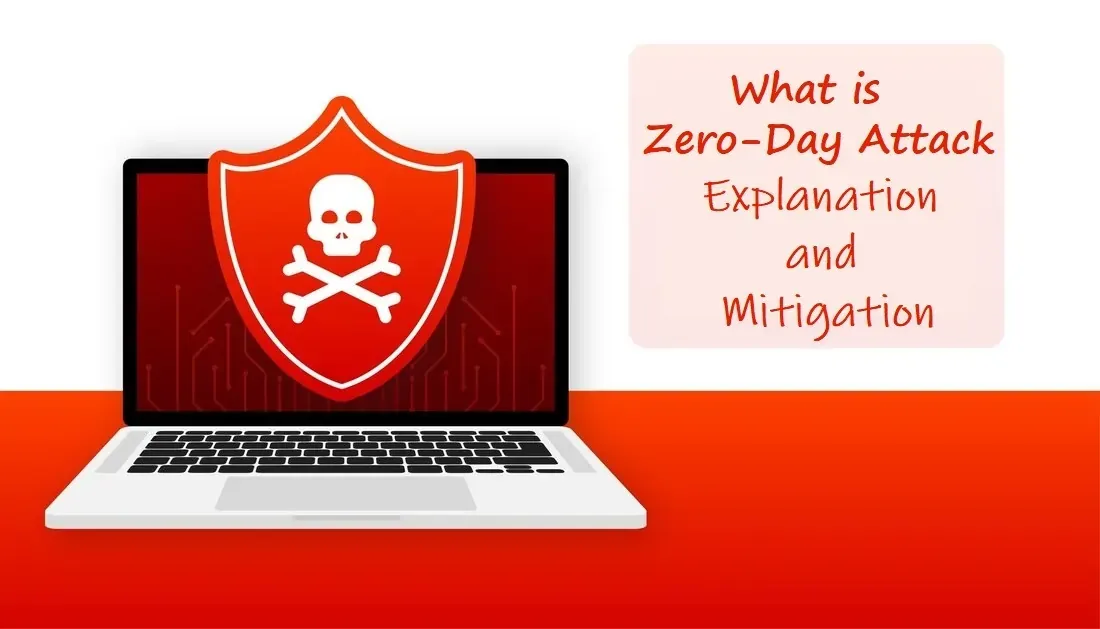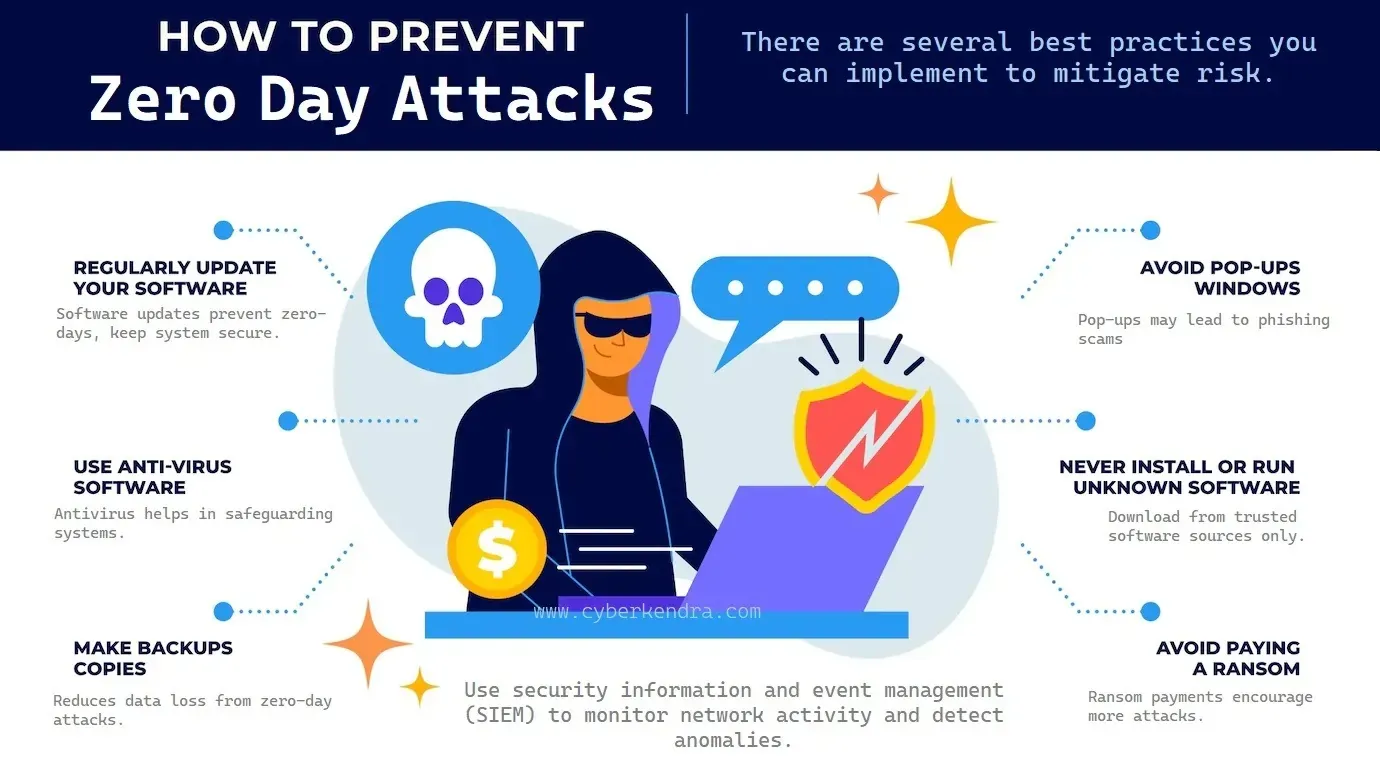
In today's digital age, cybercrime is an ever-present threat. Hackers are constantly looking for vulnerabilities in computer systems, networks, and applications to exploit for their gain. One of the most dangerous types of attacks that can occur is a zero-day attack.
Zero-day vulnerabilities are an ongoing threat to software systems and users, and they are difficult to detect and prevent.
In this article, we'll define what a zero-day attack is, explain how it works, and explore different methods for mitigating the risks associated with it.
What is a Zero-day Attack?
Zero-day attacks are one of the most insidious and dangerous types of cyber attacks. These attacks exploit vulnerabilities in software or hardware that are unknown to the vendor and have not yet been patched or updated. Because these vulnerabilities are unknown, there are no known defense mechanisms, making them particularly difficult to detect and prevent.
The term "zero-day" refers to the fact that the software vendor has had zero days to patch the vulnerability before an attacker exploits it. This gives the attacker a significant advantage, as they can use the vulnerability to gain access to systems, steal data, or cause damage before the vendor even knows about the vulnerability.
Zero-day attacks are particularly attractive to cybercriminals and nation-state actors because they can be used to gain access to high-value targets, such as government agencies, financial institutions, and large corporations. These attacks are also difficult to attribute to a specific attacker, as there are often no clear indicators of who carried out the attack.
Zero-day attacks can take many forms, including:
- Exploits of unpatched vulnerabilities in software or hardware
- Malicious code injected into legitimate websites
- Spear phishing attacks targeting specific individuals or organizations
- Watering hole attacks targeting specific websites or online communities
- Advanced persistent threats (APTs) use a combination of tactics to gain access and maintain persistence in a target network
The consequences of a successful zero-day attack can be severe, including data theft, financial loss, damage to reputation, and even physical harm in some cases. Organizations need to take proactive measures to protect their systems and networks against these types of attacks.
Zero-day Attacks Examples
Stuxnet: Stuxnet is a famous example of a zero-day attack that targeted Iran's nuclear program. It was a highly sophisticated piece of malware that exploited zero-day vulnerabilities in Windows and Siemens software. The attack caused physical damage to centrifuges, which led to a significant setback in Iran's nuclear program.
WannaCry: WannaCry was a ransomware attack that affected computers running the Microsoft Windows operating system. It exploited a zero-day vulnerability in the Server Message Block (SMB) protocol. The attack spread rapidly across the globe, causing widespread disruption and financial losses.
Log4Shell: Log4Shell (CVE-2021-44228) is a recent example of a zero-day vulnerability in Log4j, a popular Java logging framework. The vulnerability allowed attackers to remotely execute code on affected systems, potentially leading to data theft, financial loss, and other serious consequences.
How do zero-day attacks work?
Zero-day attacks work by exploiting vulnerabilities in software or hardware that are unknown to the vendor and have not yet been patched. Attackers typically use a combination of social engineering, malware, and other tactics to gain access to a system or network.
The attack usually begins with the attacker identifying a vulnerability in the target system or software. The attacker then creates an exploit, which is a piece of code that takes advantage of the vulnerability. The exploit is typically delivered through a phishing email, a malicious website, or a compromised software update.
Once the exploit is delivered, it can be used to gain access to the system or network. The attacker can then use a variety of techniques to maintain persistence, such as installing backdoors or creating new user accounts.
Because zero-day attacks are unknown to the software vendor, they are often not detected by traditional security tools, such as antivirus software and firewalls. This can allow the attacker to remain undetected and continue to exploit the vulnerability for an extended period.
How to prevent zero-day attacks?

Preventing zero-day attacks requires a multi-layered approach that includes both technical and non-technical measures. Some steps organizations can take to mitigate the risks of zero-day attacks include:
- Keeping software and systems up to date with the latest patches and updates
- Implementing robust security controls, such as firewalls, intrusion detection systems, and antivirus software
- Using advanced threat detection technologies, such as behavior-based analysis and machine learning algorithms
- Conducting regular security awareness training for employees to help them identify and avoid phishing attacks and other social engineering tactics
- Using a layered defense strategy that includes perimeter security, endpoint security, and data security measures
How can organizations respond to zero-day attacks?
If an organization experiences a zero-day attack, it's essential to respond quickly and effectively to mitigate the damage and prevent further attacks. Some steps organizations can take include:
- Isolating affected systems and disconnecting from the network to prevent the spread of the attack
- Notifying relevant stakeholders, such as customers, partners, and law enforcement
- Conducting a thorough investigation to determine the cause of the attack and assess the extent of the damage
- Implementing measures to prevent future attacks, such as patching vulnerabilities and updating security controls
- Reviewing incident response plans and procedures to identify areas for improvement
Wrap-Up
Zero-day attacks are a significant threat to organizations of all sizes and across all industries. These attacks exploit vulnerabilities in software or hardware that are unknown to the vendor, making them difficult to detect and prevent.
Organizations can take proactive measures to mitigate the risks of zero-day attacks by implementing robust security controls, conducting regular security awareness training, and using advanced threat detection technologies.
In the event of a zero-day attack, organizations should respond quickly and effectively to minimize the damage and prevent further attacks.
Frequently Asked Questions (FAQs)
1. What is the difference between a zero-day attack and a known vulnerability attack?
A zero-day attack exploits a vulnerability that is not publicly known or for which a patch has not been released. A known vulnerability attack exploits a vulnerability for which a patch or fix is available.
2. Can zero-day attacks be prevented?
Zero-day attacks can be difficult to prevent, but organizations can take steps to mitigate the risks associated with them, such as keeping software up to date and using security software.
How do zero-day attacks affect businesses?
Zero-day attacks can have a significant impact on businesses, both in terms of financial loss and damage to reputation. These attacks can result in the theft of sensitive data, such as customer information, intellectual property, and financial data. They can also cause disruptions to business operations, leading to downtime, loss of productivity, and revenue loss.
Can zero-day attacks be detected?
Zero-day attacks can be difficult to detect because they exploit vulnerabilities that are not yet known to the software vendor. However, using advanced threat detection technologies, such as behavior-based analysis and machine learning algorithms, can help identify suspicious behavior and potential zero-day attacks.
What should organizations do if they experience a zero-day attack?
If an organization experiences a zero-day attack, it should immediately take steps to mitigate the damage and prevent further attacks. This may include isolating affected systems, disconnecting from the network, and notifying relevant stakeholders, such as customers and law enforcement. It's also essential to conduct a thorough investigation to determine the cause of the attack and implement measures to prevent future attacks.